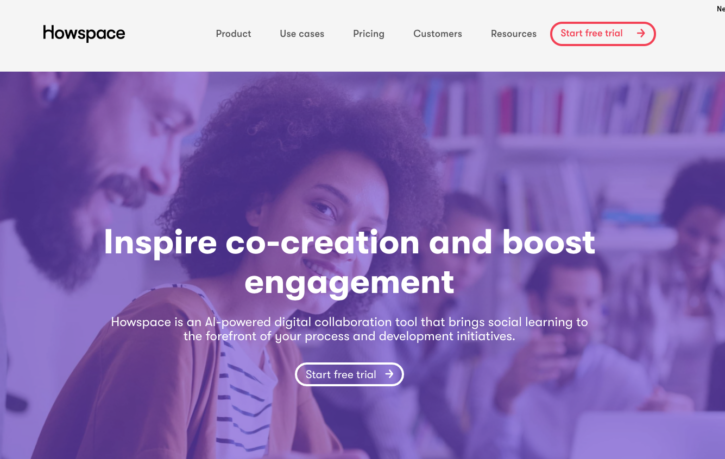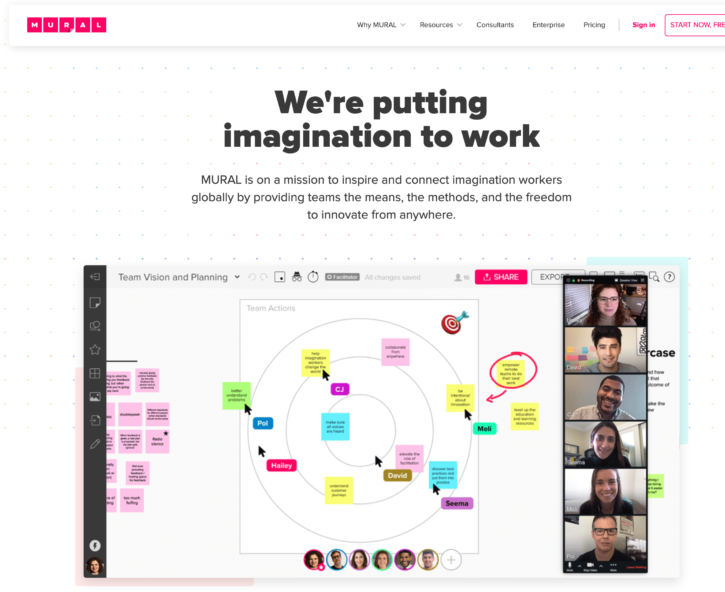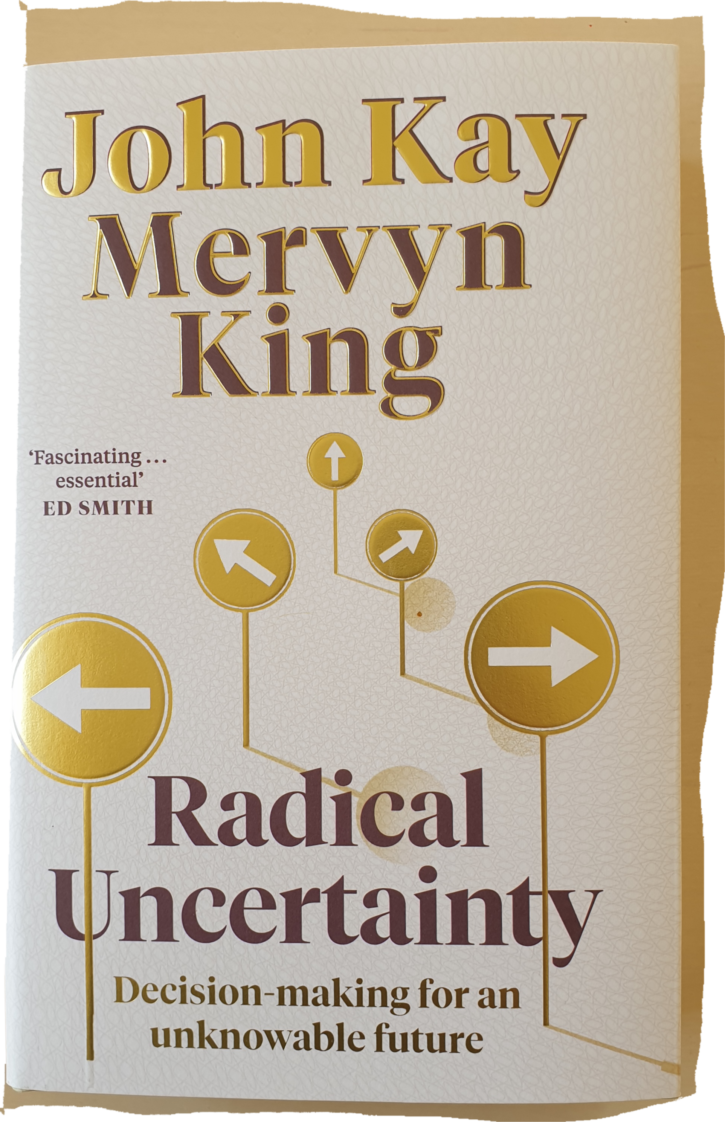Header Title
Impossibility engineering – decision-making as a discipline?
Is decision making a process or a result? Individual or collective? How do we make decisions effectively in a chaotic world of macro-phenomena and unpredictability?
Art, science or learned skill?
“Decision making” – a seemingly innocuous moniker that spans a plethora of evils and paths to salvation or disaster, whether national or organisational. It goes on all the time, everywhere, at every level of our lives.
Certain kinds of decisions – prime among them being the larger “which direction”/big-change ones – are the traditional C-suite combined burden and privilege, kept in the hands of the few, albeit under the relentless scrutiny of shareholders and owners. Such top executives and corporate figureheads get paid the big bucks for their supposed perspicacity and decision-making capabilities, whether these be rooted in the art of leadership or the science of analysis. Or in executive bluffing skills, prestige poker or other arcane power-plays and dubious organisational politicking mechanisms that often don’t bear exposure to public gaze or in-house inspection.
Or is decision making an acquirable professional skill/capability that can be learned, honed and improved – and perhaps even become a specialist business service? This seems a crucial question when the basis for high-level decision making is getting increasingly complex, and the scope for such processes increasingly unpredictable.
Process or result? Moulding or making?
One simplistic differentiator is that decision moulding involves the countless lead-in processes. whereas decision making is what lies under the final push on the “go” button (and the subsequent execution).
Over recent years, most larger organisations in some cultures – but not all – have had to face up to the growing necessity of team-based working and influence, and of collaborative decision-making, and have therefore become somewhat less top-down authoritarian. There are also new agendas that pay at least lip service to inclusivity and consultation as well as rafts of national and international legislation, SDGs et al that together leave less and less wiggle room for dictates from organisational despots.
This all means there are a lot of people to be heard, consulted and placated as an integral part of any organisational decision-making that wants to keep the troops happy – and in their jobs. Decisions – especially at “lower” levels – hereby become a lengthy process of practical facilitation, supposedly important for building consensus, big on swallowing precious man-hours by the bucketful, less so on producing actionable conclusions.
Such processes bring in the decision-moulders, and their involvement often requires a long, expensive process of consultation, workshops and facilitation. A whole ecosystem of facilitators and enabler tools has arisen to meet this particular organisational need, which basically adds up to helping an organisation do its thing, without responsibility or real influence on outcomes.
Sciencifying how people make decisions
Economics has long been one of the key components in most flavours of theorising about decision making. I’m one of the generation raised on the seminal work of Paul Samuelson and (inter alia) his theory of revealed preference, back when economics was chasing the determinist dream. Basically, many aspects of decision making once seemed like a fairly functional machine – extremely complex, yes, but still comprehensible and somewhat manageable, with the right analysis models, enough PhDs, enough money, loads of data and some seriously nerdy tools to process it all.
However, mechanistic understandings of economics and decision making are no longer in vogue. Not least because they have been effectively kyboshed by the growing complexity of the world economy, the speed of change made possible by digitisation, and giant SoMe smacks to all conventional decision-making processes. Since then, the economics side of studying what lies behind decisions – and their implementation – has splintered into a huge range of new narratives, mindsets and tools for comprehension and analysis. Big among those likely to remain part of next-generation understanding are:
Since then, the economics side of studying what lies behind decisions – and their implementation – has splintered into a huge range of new narratives, mindsets and tools for comprehension and analysis. Big among those likely to remain part of next-generation understanding are:
- Behavioural economics (featuring big dollops of psychology), unrolled by Nobel laureate Daniel Kahneman
- Narrative economics, developed by 2013 Nobel Prize winner Robert J. Shiller
- Doughnut economics, focusing on social and planetary boundaries, developed by Kate Raworth
- Environmental economics that also considers planetary fundamentals that traditional “thing-based” economics leaves out
- More conventional economics, rejuvenated and substantially rethunk for 21st-century realities by next-gen thinkers like Thomas Piketty and Paul Mason
and then there are also:
- Stakeholder governance models, as used in B Corporations
- A growing field of interdisciplinary, managerially focused wisdom and insights, such as Mervyn King’s work on radical uncertainty
- Greater focus on how to ensure organisational and decision-making resilience, and how to plan for business continuity
- The psychological and behavioural dimensions of “motivated reasoning”, and of mindset theory, founded by Peter Gollwitzer in the 1980s
- Automated, AI-driven pattern recognition as a basis for decisions and action
- The underlying mathematical dimension, as recently radically expanded by Martin Hairer, winner of the 2021 Breakthrough Prize for Mathematics for break-the-mould work on stochastic analysis and “regularity structures”
The days of understanding decision making in terms of traditional “rational self-interest” are over. Any attempt to crystallise and distil decision making into some kind of credible, sellable professional discipline, with a particular spectrum of specialist capabilities, has to be able to encompass, articulate and deal with the kinds of angles listed above – and more. Together, these lead to various flavours of conclusions that decision making at all levels – even in what we think has become a data-based/knowledge economy, with key information widely available – is often wildly counter-intuitive, distinctly hackable and bendable, and eminently unforeseeable.
Such micro-level sciencifying may well seem to be over-complicating “simple” organisational decision making that has to avoid drowning in detail – for many practical reasons. But something has to balance out the kinds of journo-speak over-simplification that negate context and complexity, and scramble cause-and-effect linkages. Soundbites and feel-good/feel-bad storytelling don’t help us deal realistically with complexity and seeming impossibilities. Something has to be able to cope with political shenanigans and as the Trumpification of day-to-day truths shreds the agendas for scientific and professional discourse that mould our lives and our understanding of these.
Macro-phenomena, unpredictability and flux
The days when an organisation (or group of them) could simply make its own decisions and decide its own fate are now long gone, in most economies and at just about every level. Even mom-and-pop shops in tiny villages can now suddenly be at the mercy of climate change effects, global geopolitical upheavals and unpredictable economic fluctuations, not to mention pandemics and natural disasters. All of which means no strategist or decision maker can reckon on tomorrow being like today. The VUCA monster (volatile, uncertain, complex and ambiguous) has become the apex predator, the new normal.
Rapid change has become the norm for decisions large and small, and the contours of tomorrow’s “terms of business” are probably more unpredictable than they’ve ever been. Many key global environmental metrics are reaching irreversible tipping points, and even globally agreed goals for alleviating major problems seem perilously unlikely to be reached. Once-givens like breathable air, drinkable water, weather patterns, crop growth and sea levels are now fundamental uncertainties that can quickly yank the rug out from under any business operations, and transmogrify the costs and conditions of doing business. Digitalisation, automation and a vast range of other transformative technologies and disruptive business models have also substantially reconfigured the infrastructural tectonic plates for many aspects of commercial activity, logistics and communication.
New tools for changed tasks
Mid- or post-corona, a key extra dimension to decision making has arisen – remote working from home, along with other structure rethinks/restrictions. Effective, innovative work in now-fashionable “teams” requires new kinds of facilitation techniques as well as purpose-appropriate tools and platforms that enable remote consultation and collaboration.
As a result, many organisations’ decision-moulding and decision-making processes have been thrust into digital territory. Tools like Zoom et al have shifted quickly from esoteric to ordinary, used by (almost) everybody. Two of the (apparently) better-reputed facilitation tools are Howspace and Mural – the latter of which bills itself as a digital workspace for visual collaboration, but can actually be used for a whole lot more.
But such tools also have to deal with new dimensions, especially when stakeholders all over the world are involved. Time zone differences require new kinds of facilitation and implementation mindsets, and tools for asynchronous collaboration and distributed “post-place” decision-making activity. They also require the ability to master and manage the dynamics involved – which are very different from mere electronic(ally enhanced) versions of familiar face-to-face sessions.
Tools ≠ decisions
Such online “how” process tools can seem shiny and beguiling while they still have novelty value, and may help drive an (apparently) rapid shift to distributed work – but only if users find them dead-easy to use. The value of such tools lies in people’s ability to use them effectively – hammer/carpenter comes to mind. However, such tools aren’t in themselves decisions and shouldn’t be allowed to steal focus from what the tools are to be used for. Online facilitation procedures and tools can be a good practical aid to collaboration as well as a mid-pandemic accelerant for (mostly) lower-level decision making. But are they a path to decisions otherwise not possible, or are they really “just” about conventional motivation, team-building and collaboration?
I’d rather have a great team with bad tools than a bad team with great tools
According to a recent Gartner survey, 8 out of 10 business executives believe “automation can be applied to any business decision”. But it’s difficult for any facilitation consultant to simply assert that they use such off-the-shelf, open-to-everyone tools better and more effectively than any other corresponding setup – whether based on experience or innate brilliance. When the discussion is still tied down in “how” mechanisms, any strategic differentiation and market profiling get a lot more difficult. Your facilitation (etc.) skills may well be top-notch, but the business model behind them is in the proprietary hands of commercial software companies, rather than of those who use the software. Relying too much on commercial tools means you and your facilitation setup are ultimately just passengers on somebody else’s train.
From facilitation to responsibility –
transformative decision making
In terms of big, planet-dooming or planet-saving decisions, posterity won’t give us any medals for a comfortable, inclusive “process” if there aren’t any viable results to show for it at the end. When you have to tackle the really gnarly “big picture” stuff that affects the quality of life for millions of people and the future of the planet, concrete, actionable (and preferably enforceable) multi-stakeholder decisions are the only currency in town.
But how do you craft effective decision-making processes and cross-organisational nexuses when you only have imperfect knowledge of the real facts (and even those can be contested, either Trump-style or ideologically on the basis of self-interest, blind faith, religion and prejudice)? How do you structure decision-making processes and their fluidity, when increasing numbers of large-scale decisions have only very temporary validity? Circumstances and criteria can morph very quickly, while outcomes and timelines are increasingly unpredictable. Do people and organisations have the energy, resources or motivation for rapid, multi-iterative decision-making? Where then lieth authority (natural or assumed), leadership and vision?
Reliance on conventional econometric models and facilitating “standard stuff” simply isn’t enough to birth and nurture the macro-decisions that seem essential for tackling the seriously gnarly macro-challenges and ethical conundrums impacting our whole planet. Conventionally seen, the über-model for this probably the World Economic Forum. But the resources of this redoubtable setup aren’t available to everyone – and time is of the essence.
Tomorrow is now a question
Who deals with the extraordinary/”what” decisions?
If reaching effective, timely decisions to deal with seriously gnarly world issues were feasible using the frameworks, mechanisms, products, services, geeks and gurus available on the mainstream market, most of the difficult high-level decisions would’ve been made – and we would be able to reckon with a liveable future for our planet.
There are countless macro-phenomena and systemic issues beyond the capabilities or reach of any individual organisation’s decision wonks. However, the traditional facilitation industry is a service mostly designed for the familiar and doable, rather than as a tool for transformational leadership or groundbreaking decision capabilities. Meanwhile, the commercial dynamics inevitably involved in “working for the client” mean such frameworks and constellations are rarely going to be the kinds of cross-organisational, silo-transcending mould-breakers needed to tackle the most serious issues facing our planet and the people trying to live on it. Conventional “leading from behind” client-based consultancy is never going to be able to tackle the seemingly insolvable quandaries involved in ultra-high-level, cross-organisational, trans-national problem-solving.
Many top-level honchos are tired of “dumb” tech that provides a proliferation of backwards-looking data, but no clear path forwards. It’s difficult to find high-leverage help for crafting actionable answers to the most difficult “what do we do?” and “which direction do we roll?” calls that are crucial in a highly unpredictable future in which key challenges are systemic and many once-common assumptions are suddenly fluid and unreliable.
Operating under conditions of incomplete information, rampant misinformation and “radical uncertainty” requires transformative decision making, leadership capabilities and specialist skills not easily sourced.
Business case for impossibility engineering?
As a result, there seems to be a significant commercial opportunity for an exciting new kind of beyond-mere-facilitation consultancy business aimed at driving macro-decision making processes, to deal with radical uncertainty and the unpredictable ways this manifests itself in multipartite impossibles and imponderables.
A key feature of such a model would lie in the unique ability to “lead from the front” by convening decision-making groupings and “big picture” problem-tackling platforms that any single interested party (or small group of them) is unlikely to initiate. Unless you’re supremely well-connected and have oceans full of money, this can probably only be done via professional and moral authority, solid experience and specialist process guardianship skills to bring the appropriate people and organisations to the metaphorical table (or screen). Bipartisanship/professional neutrality and “Switzerland” credentials can have a big value here.
it’s the right thing to do
Leveraging the power of professional and moral authority would enable a “decisions mover” at this level to take independent initiatives to convene new platforms for tackling macro-issues. Displaying strategic conviction and a willingness to take the initiative when no one else can or will changes the entire client/consultant dynamic, and removes many of the intrinsic limitations. “Get aboard, because it’s the right thing to do – and everyone knows it.” It also enables a “decisions mover” setup to play a much more (pro-)active role, providing help and guidance to participants as well as exerting pressure and even delivering a kick in the professional posterior, if necessary.
Taking the initiative to new models for tackling macro-issues from a position of intrinsic authority and experienced, professional conviction can start by daring to posit that the seemingly insoluble can be made at least partially possible – and that inaction amounts to deliberate, wilful failure. By visibly fielding the personal integrity of key initiators along with the proven track record, professional credibility and moral leadership nous to bring disparate groups to the metaphorical negotiating table, it would become possible to apply the cross-organisational skill sets and high-level experience needed to lead, guide, inspire, cajole and facilitate actionable decisions and workable solutions to complex, multi-stakeholder/participant problems.
Decisions, meetings (whether physical or digital) and slogans aren’t deployed action, so successfully tackling “big-picture” issues and altering big organisations’ societal purpose and strategic paths also require the credibility and clout to make sure headline agreements don’t become mere window-dressing and woke waving. The “how” dimensions of decision implementation, follow-up and good governance – familiar to facilitators – will remain a valid field of professional endeavour, but at macro levels everything depends on the ability to mould effective, actionable answers to the “what” and “why” mega-questions, amid radical uncertainty.
New mindsets, different constellations, new business models
Old decision-making practices and working norms apply until they suddenly don’t. Many would argue that the time for the “big reset” and rolling out a proverbial “new normal” mindset is now. New skills, digital tools, different organisational collaboration formats and demands for new kinds of “big picture” organisational responsibility pave the way for innovative “decisions mover” business models. Somewhere in the pudding, this would probably feature:
- Willingness to tackle issues beyond the purview of individual countries, organisations and companies
- Focus on the non-financial aspects of quality of life for future generations
- Commercial and strategic value of leading by example (compare Musk v Zuckerberg, Patagonia v Prada, B Corporations v BASF et al – etc.)
- Fluidity, iterative solutions, following purpose-driven agendas
- Dynamic decision-making structures, to ensure rapid responses to fast-changing situations
- Distributed decision making, so action is close to point of application
- Flexible, context-aware implementation, aided by technologies such as self-learning AI
- The ability to scale good ideas up and down
- (etc.)
There’s a vacuum waiting to be filled … This won’t be a big field – but its capabilities and methods will reach out to big players as well as big minds. And it’s at least an attempt to answer the “can any of us afford not to try?” question.




